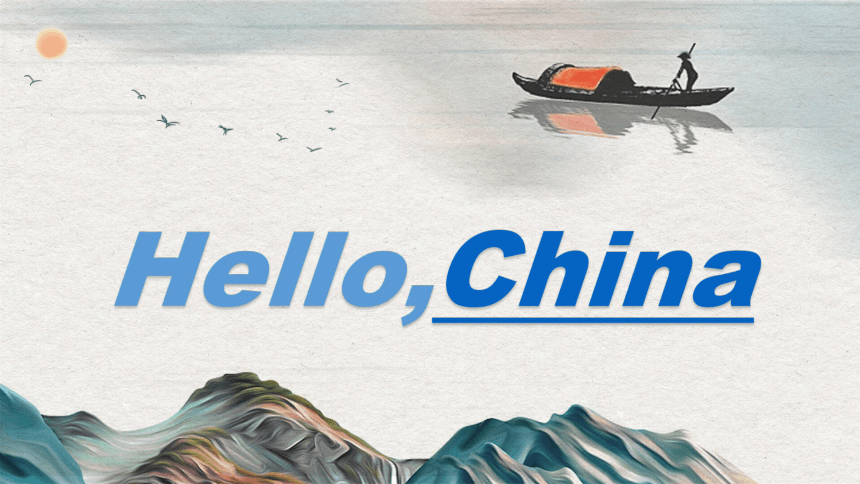(
课件网) Hello,China Acupuncture and Moxibustion TCM (Hello China ) Acupuncture, which is called zhen jiu in Chinese, is a medical treatment that originated in China. Zhen means needles that pierce one's body. Jiu means moxibustion, a special treatment in traditional Chinese medicine. Plant leaves were once used to smoke certain parts of the human body Traditional Chinese medicine describes the energy flow within the human body as a network. It is called jīngluò. The major nodes on the network are called que wei. or an acupuncture point. Traditional Chinese doctors believethat stimulating the que wei can promote energy circulation and expel illness. For example, having zhen jiu on zu san li can promote digestion and having zhen jiu on nei guan is good for one's heart. Chinese people have been using this medical treatment for thousands of years. The tiny needles reveal the mysteries of human body. The Mid-Autumn Festival, Zhongqiujie, is a festival for families to get together in China. It falls on the 15th day of the 8th lunar month, when the full moon returns to the sky. On this day, people eat a moon-shaped dessert called a Moon Cake. All the family members sit together, eat Moon Cakes and fresh fruits, and enjoy the sight of the round and bright moon. Those who cannot return home look at the round moon and think of their family. Chinese people all around the world shares the same tradition. Just like an ancient Chinese poem says, the moon was rising from the sea and all the people were sharing this moment. 07 Moon and its significance in Chinese culture This character means moon with wax and wane. Mythical meanings are attributed to yue liang in Chinese legends. Legend has it that, Chang er, the wife of Chinese hero Hou Yi, stole her husband's elixir and ate it. Then she became a fairy and flew to the yue liang. She lived alone on the yue liang with only company of a rabbit. Worshipping yue liang is an ancient custom in China. A round yue liang represents family reunion and often reminds people of their family. An ancient Chinese poem says, 'raise my eyes to the yue liang, lower my head and think of home.' 15 Chinese frescoes Ancient artworks Chinese frescoes date back to the prehistoric period some 10,000 years ago. People carved images of human activities and natural views on rocks. Excavated from tombs built 2,200 years ago, the bǐ huà remains clear, vivid and colorful. Legend has it that an ancient painter drew a dragon on the wall and when he added eyes to the drawing, the image turned into a real dragon. With the introduction of Buddhism to China, bǐ huà on the subject of religion rapidly developed. The bǐ huà, or frescoes, in the Dunhuang Mogao Grottoes are the most famous ones in China. They are a collection of masterpieces of numerous painters in the past 1,000 years. They tell historical tales and religious stories. 58 Thousand Buddha Grottoes Dunhuang Dunhuang is an oas ... ...

